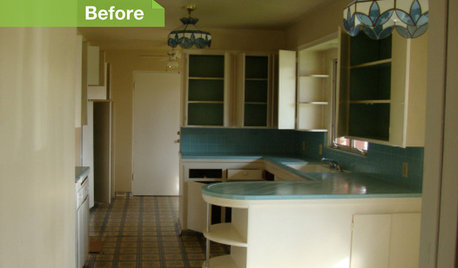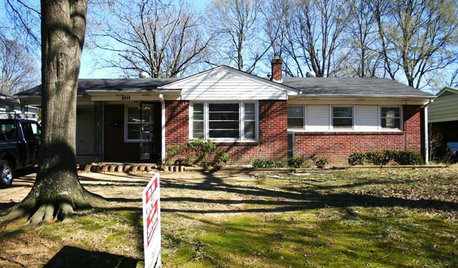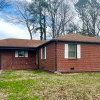Septic update
jane__ny
15 years ago
Related Stories

KITCHEN DESIGN24 Dramatic Kitchen Makeovers
From drab, dreary or just plain outdated to modernized marvels, these kitchens were transformed at the hands of resourceful Houzzers
Full Story
REMODELING GUIDES5 Ways to Protect Yourself When Buying a Fixer-Upper
Hidden hazards can derail your dream of scoring a great deal. Before you plunk down any cash, sit down with this
Full Story
BATHROOM DESIGNPedestal Tubs Have Style Bases Covered
Blending old-fashioned elegance with spa-style pampering, pedestal tubs are a practical alternative to claw-foot and standard models
Full Story
BATHROOM DESIGNPowder Room Essentials to Keep Guests Happy
Set out these bathroom necessities (hello, hand towels) to make your company comfortable and your parties run smoothly
Full Story
SELLING YOUR HOUSEThe Latest Info on Renovating Your Home to Sell
Pro advice about where to put your remodeling dollars for success in selling your home
Full Story
REMODELING GUIDESConsidering a Fixer-Upper? 15 Questions to Ask First
Learn about the hidden costs and treasures of older homes to avoid budget surprises and accidentally tossing valuable features
Full Story
ARCHITECTURE10 Advantages of the Humble Ranch House
Boomer-friendly and not so big, the common ranch adapts to modern tastes for open plans, outdoor living and midcentury mojo
Full Story
MOVINGWhat Those Home-Sale Disclosures Are Really Saying
Avoid costly surprises by knowing what’s included in a home seller’s disclosure, what’s not and what you can do if you suspect foul play
Full Story
MIDCENTURY HOMESHouzz Tour: An Eichler Remodel Spawns a Design Career
A homeowner finds her true calling upon redesigning her family's entire California home
Full Story
CONTRACTOR TIPSBuilding Permits: 10 Critical Code Requirements for Every Project
In Part 3 of our series examining the building permit process, we highlight 10 code requirements you should never ignore
Full Story







jojoco
dreamgarden
Related Professionals
Gladstone Architects & Building Designers · Glens Falls Architects & Building Designers · Johnson City Architects & Building Designers · North Chicago Architects & Building Designers · Panama City Beach Architects & Building Designers · Country Club Hills General Contractors · De Luz General Contractors · Leominster General Contractors · Milford Mill General Contractors · Nashua General Contractors · Sauk Village General Contractors · Tabernacle General Contractors · Palm River-Clair Mel General Contractors · Ashwaubenon Interior Designers & Decorators · Linton Hall Interior Designers & Decoratorstheroselvr
jane__nyOriginal Author
mariend
idrive65
Pipersville_Carol
jane__nyOriginal Author
theroselvr
Adella Bedella
kathyg_in_mi
jane__nyOriginal Author
theroselvr
sue36
jane__nyOriginal Author
eandhl
theroselvr
jane__nyOriginal Author
kathyg_in_mi
Adella Bedella